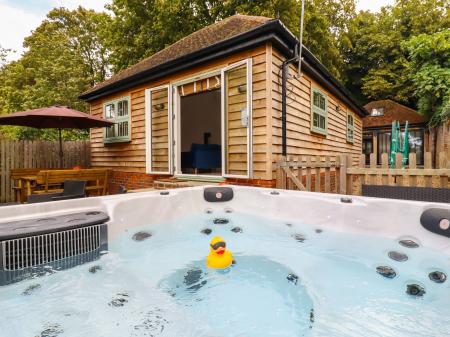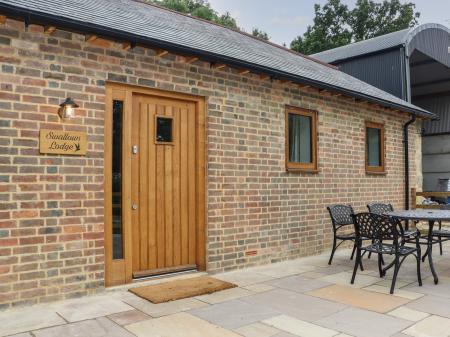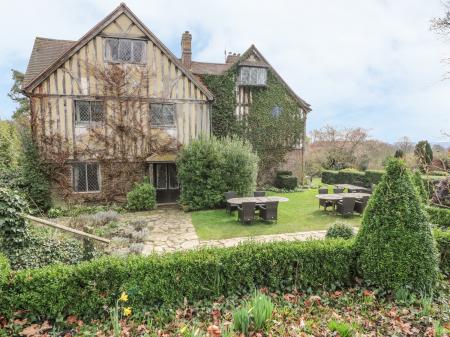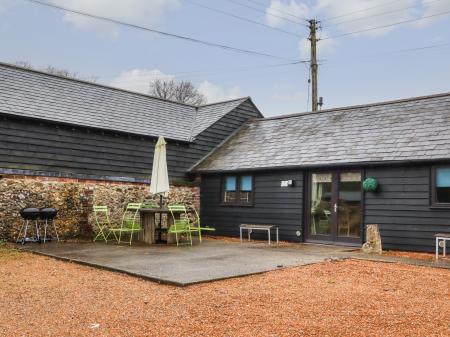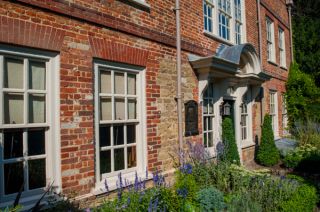
There is a monument to Wolfe on the green, and the font at which he was baptised still stands in the 13th-century parish church of St Mary. Three of Sir Winston Churchill's grandchildren were also baptised here. In St Katherine Chapel is another memorial to Wolfe, and several interesting brasses, including that of Revd Thomas Dye, thought to be one of only 2 brasses in the country depicting a Post-Reformation clergyman in full vestments.
One very unusual feature is that there is not one, not two, but three royal coats of arms (to George III, Edward VI, and Elizabeth II). The Edward VI arms are the oldest of his reign in existence.
History
Westerham was established beside the River Darenth, near the ancient trackway that ran along the top of the North Downs. Around 200 BC the Cantii tribe built an earthwork fortification on what is now part of the Squerryes estate. This early settlement covered 11 acres.
More evidence of early settlement was unearthed in 1927 with the discovery of the Westerham Hoard on nearby Hosey Hill. The Hoard, now in the British Museum, contained one of the earliest Iron age coins in Britain, struck around 100 BC, and depicting a head of Apollo on one side and a horse on the reverse face.
The Romans established vineyards here, on south-facing slopes. Some of the same sloping vineyards that the Romans created are now used to grow grapes for Squerryes Sparkling Wines.
Around 455 AD the Jutes invaded England and established their territory in what is now Kent. The settlement here was on the westernmost edge of Jutish territory, and so became known as 'Oisterham', or Westerham.
Westerham manor was owned by King Harold before the Norman Conquest and was later granted by William the Conqueror to Eustace of Boulogne. Queen Maud later owned Westerham, until it was sold into private hands. The town gained a market charter in 1227 under a grant from Henry III.
One later lord of the manor was Hugh Camville, who sold off parts of the Westerham estates to London merchants, including the three-time Lord Mayor, Dick Whittington. Camville fell upon hard times and eventually sold the manor to Edward I and Queen Eleanor, but he was allowed to remain in residence in exchange for the annual rent of a single red rose.
Edward I granted the manor to the abbot of Westminster, but at the Dissolution of the Monasteries, it reverted to the crown. Henry VII promptly sold it to Sir John Gresham.
The centre of Westerham is full of interesting historic buildings. Look for the George and Dragon, a 17th-century inn. General Wolfe is known to have stayed at the George and Dragon on his final visit to Westerham in 1758. Another pub is the General Wolfe, clad in 19th-century weatherboarding, but actually dating to the 16th century.
Nearby is Pitts Cottage, another 16th-century building and once home to William Pitt. On the green stands the Grasshopper, an old coaching inn, which takes its name from the family crest of the Gresham family, whose seat was at Titsey Place, just 2 miles away. Another Grasshopper Inn is just a few miles away at Moorhouse. The inn dates to the 13th century and boasts a wrought iron door from the Houses of Parliament in London.
Just a few miles away stands Chartwell, home of Winston Churchill. Churchill purchased the house in 1922 and used it as a country retreat from the pressures of political life. See the studio where he retreated to paint and the study where he dictated many of his books.
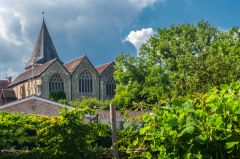
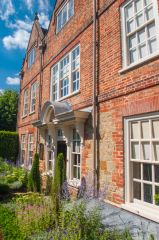
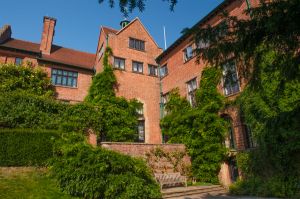
 We've 'tagged' this attraction information to help you find related historic attractions and learn more about major time periods mentioned.
We've 'tagged' this attraction information to help you find related historic attractions and learn more about major time periods mentioned.